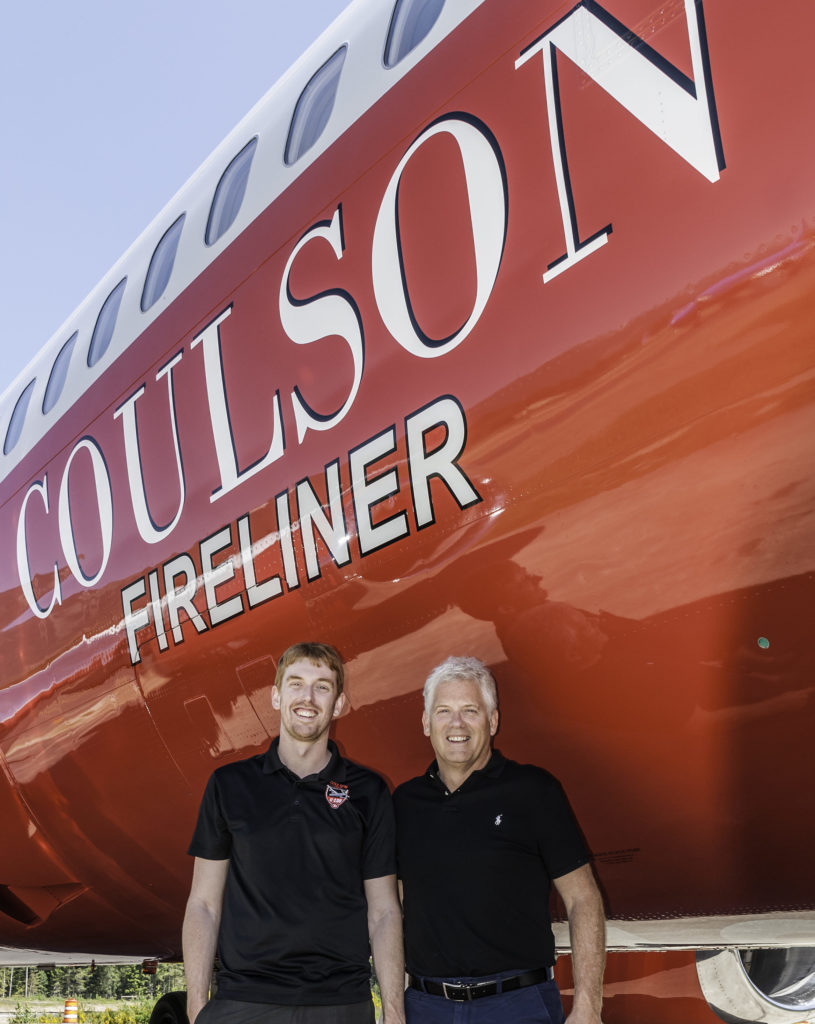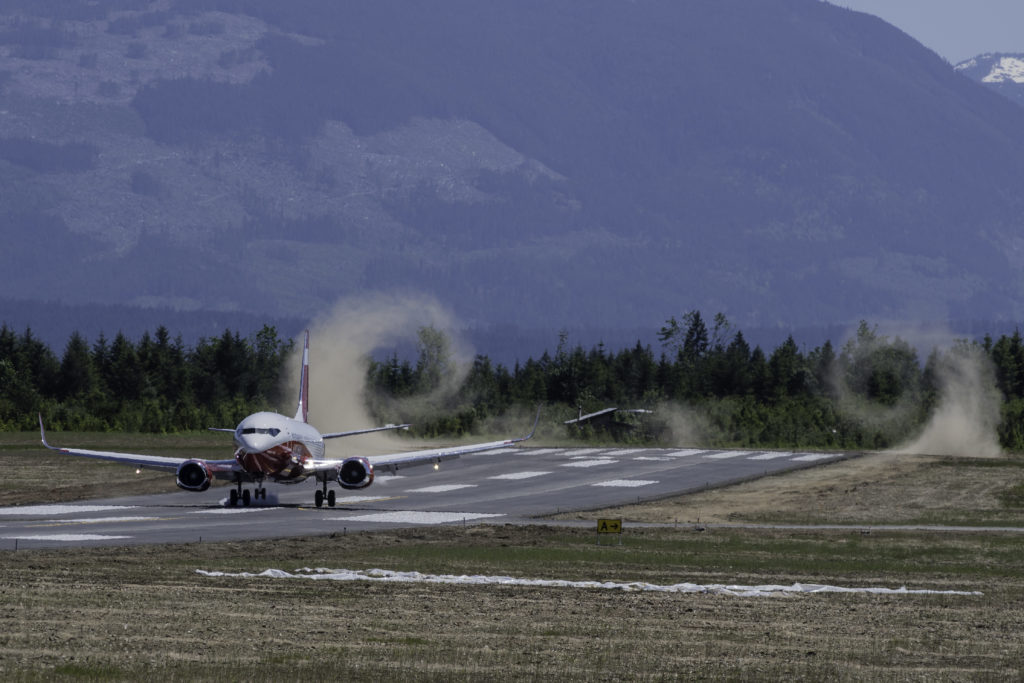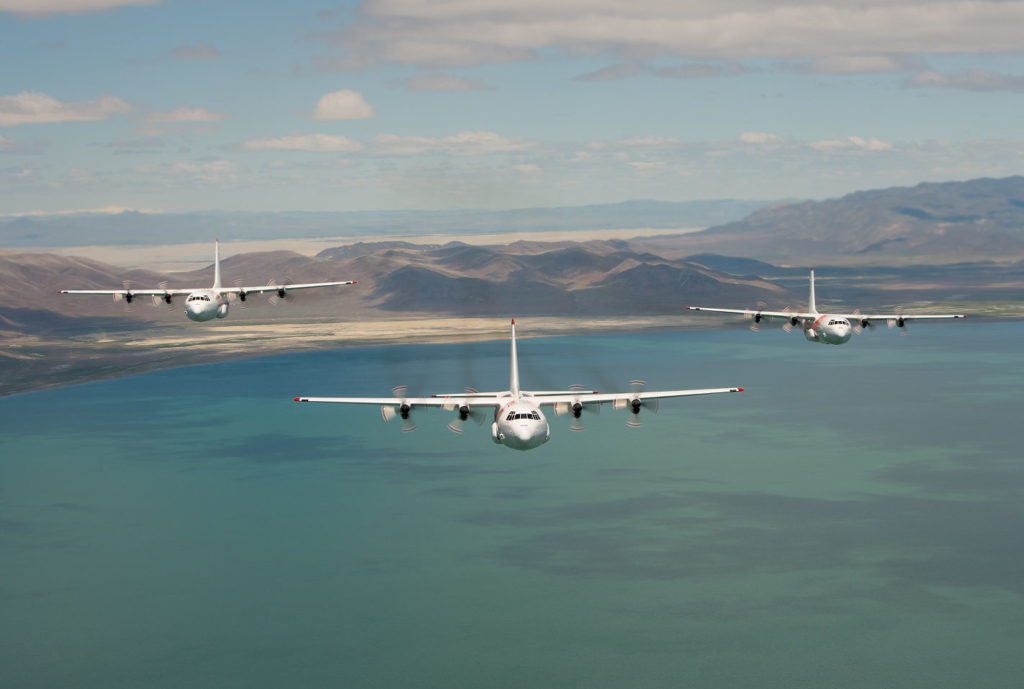Estimated reading time 11 minutes, 6 seconds.
As it passed over the runway at Alberni Valley Regional Airport on Vancouver Island last week, dipping low to the ground while media watched and snapped photos, the Coulson Aviation Fireliner looked much like any other Boeing 737-300 in an airline fleet.

With an immaculate white-and-crimson paint scheme and polished accents that reflected the afternoon sun, the aircraft would have seemed at home carrying passengers to any major airport in the world.
But Coulson, a renowned company based in Port Alberni, B.C., with extensive aerial firefighting capabilities, has a different, potentially game-changing purpose in mind.
This is the first of six Boeing 737-300s the company has acquired from Southwest Airlines, with plans to convert them into the first multi-purpose air tankers in the world.
“I think we separated ourselves from the market, because it is such a different product,” said Wayne Coulson, chief executive officer of Coulson Aviation, in an exclusive interview with Skies.
The first Fireliner arrived in Port Alberni on May 26, after being repainted in Spokane, Wash.
Over the next few months, Coulson Aviation will convert the aircraft into an air tanker capable of carrying 4,000 gallons (15,141 litres) of water or flame retardant in a Coulson-developed gravity retardant aerial delivery system (RADS).
While an average competing tanker drops a maximum of 1,200 gallons (4,500 litres) per second, the Fireliner will drop 2,200 gallons (8,328 litres) per second–a rate no other aircraft can match due to their tank designs, said Wayne Coulson.

“No jet is meant to go low and slow at max gross weight,” he said. “They need to be a little faster, above stall margin, and that’s where you need the heavy flow. That’s why we’re up at 2,200 gallons-a-second flow rate on our tanking system to compensate for speed.”
What truly sets the Fireliner apart, however, will be its ability to carry as many as 63 passengers at a time–the rough equivalent of three fire strike teams.
“That’s going to be a big advantage, we think, in the world of firefighting, where you’re always moving people around,” said Coulson.
The tanking system can also be used to disperse chemicals and oil, and the cabin can be reconfigured to allow for VIP transport.
While most of Coulson Aviation’s firefighting business is in the United States and Australia, the company is in talks with countries in South America and Europe, some of which may be drawn to the aircraft’s multirole capabilities.
“Some of these governments, they actually want to look at the option of putting the VIP interior for government use, or a higher end business class interior for moving government people around,” said Wayne Coulson. “So, using it 12 months a year. We’re getting a lot of traction on that.”

All of the conversion work for the first Fireliner will be completed at the Alberni airport, which recently extended its runway to the 5,000 feet (465 metres) needed to land a Boeing 737-300.
Workers will cut into the belly of the aircraft to create doors immediately below the fluid in the tank. The aircraft will have the only Next Gen Smart computerized tanking system in the world, with an onboard computer that has its own GPS and radar altimeter.
“We bias the door opening by the parameters of the airplane–so, based on speed and altitude,” said Wayne Coulson. “The tank doors know what the airplane’s doing, and then compensate accordingly.”
The size of the entry door will stay the same, and the washrooms and galleys in the Fireliner are being kept intact, in part because the aircraft will fly at nearly 25,000 pounds (11,339 kilograms) under its maximum gross weight.
While the aircraft is large enough for a 5,000-gallon (18,927 litre) tank, Coulson Aviation opted for a 4,000-gallon tank for safety reasons, a decision that increases its carrying capacity for other items.
“Could the airplane do 5,000 gallons? Yes it could,” said Wayne Coulson. “Is it safer to do four? Yes. So that’s what we’ve done, as safety is our number one priority. This also means we can leave in the galley, the seats, the whole interior, and we’re not ripping everything out of it every time we want to go tankering because we’re so far under max gross.”
Coulson Aviation is working with Boeing and Garmin to install the Garmin G5000 flight deck upgrade in the Fireliner, along with cockpit upgrades to its two C-130Q and two L100G Hercules air tankers.
“For night vision goggle operations, or even just general flying, that is the safest equipment you can have in a firefighting cockpit,” said Wayne Coulson.

“We also have the most technology into the tank,” he said. “One of the things we can do with this for night flying of the C-130 program is, we can drop two GPS points and we can fly on goggles between those two points, and the tank automatically drops between those two points the desired coverage level. That’s the type of technology we have in our tanking system.”
As with its C-130 fleet, Coulson Aviation has reverse-engineered the Boeing 737-300, allowing all modifications to be completed in-house.
A large team of engineers has been recruited to support the prototype Fireliner, part of a 110-person workforce that is expected to increase in size for the duration of the program.
While Coulson believes the Boeing 737-300 will be singular in its capabilities as an air tanker, it will inevitably be compared to other prominent tankers like the Avro RJ85/BAe 146 and the Lockheed L-188 Electra.
The Fireliner has 25 per cent more tank volume than all three competitors, said Wayne Coulson.
“And we’ll be able to carry seats–so, passengers–which the other two can’t,” he said. “We’ll carry the most fuel and fly the farthest, which is important for re-position flights. Our average fuel load will give us almost four and a half hours of gas while contract spec only requires two and a half hours. Keeping well below gross weight allows us to have a safer, more capable airplane and to exceed all the contract minimum requirements.”
All of Coulson Aviation’s air tanker work takes place outside Canada, something Wayne Coulson attributed to the nature of the marketplace. But he admitted it will be interesting to see how Canada reacts to the Fireliner, which he predicts will be one of the most efficient air tankers on the market.
“We’re extremely confident that, while it won’t be a C-130, it will be the next best thing and will perform a different mission,” he said. “That’s our baseline. Right now the 130 is the best air tanker in the world. I don’t think anybody you talk to would disagree with you …. We’re not really looking over our shoulder at the competitors. We’re just working off our own baseline, which is the best air tanker in the world.”

There are 14 next-generation tankers under contract with the United States Forest Service and another 10 older-generation tankers, according to Coulson. There are about 25 aircraft in the global market with 3,000-gallon tanks–plus three McDonnell Douglas DC-10s–and one Boeing 747 with a pressurized tanking system, he said.
Coulson Aviation is the only commercial company that has the only C-130 Hercules aircraft in the world used for firefighting, two of which are on exclusive-use contracts in Australia–one in Sydney and one in Victoria State. The company also has two Sikorsky S-61 helicopters and one Sikorsky S-76B helicopter in Australia, plus four Sikorsky S-61s in its North American fleet.
As for the Fireliner, conversion of the prototype is expected to begin June 1, with completion by the end of November. Then the aircraft moves south for two weeks in December to calibrate the tank with a series of drops on the U.S. Forest Service grid.
Approval is required from the U.S. Forest Service Airtanker Board, and the aircraft will also be made available for service in Canada with the hope of securing firefighting contracts in both Canada and the United States.
“It’ll be somewhere in the world in 2018,” said Wayne Coulson when asked when the aircraft will be flown operationally. “We’re just not sure, but we’ve got multiple options.
“The reality is, we’ve run out of airplanes for the opportunities we have, and that’s why we’re looking for the best airplane to complement the C-130. The Fireliner is able to do things the Herc can’t, which makes them a great team and the perfect pairing for the new marketplaces we’re expanding to.”








